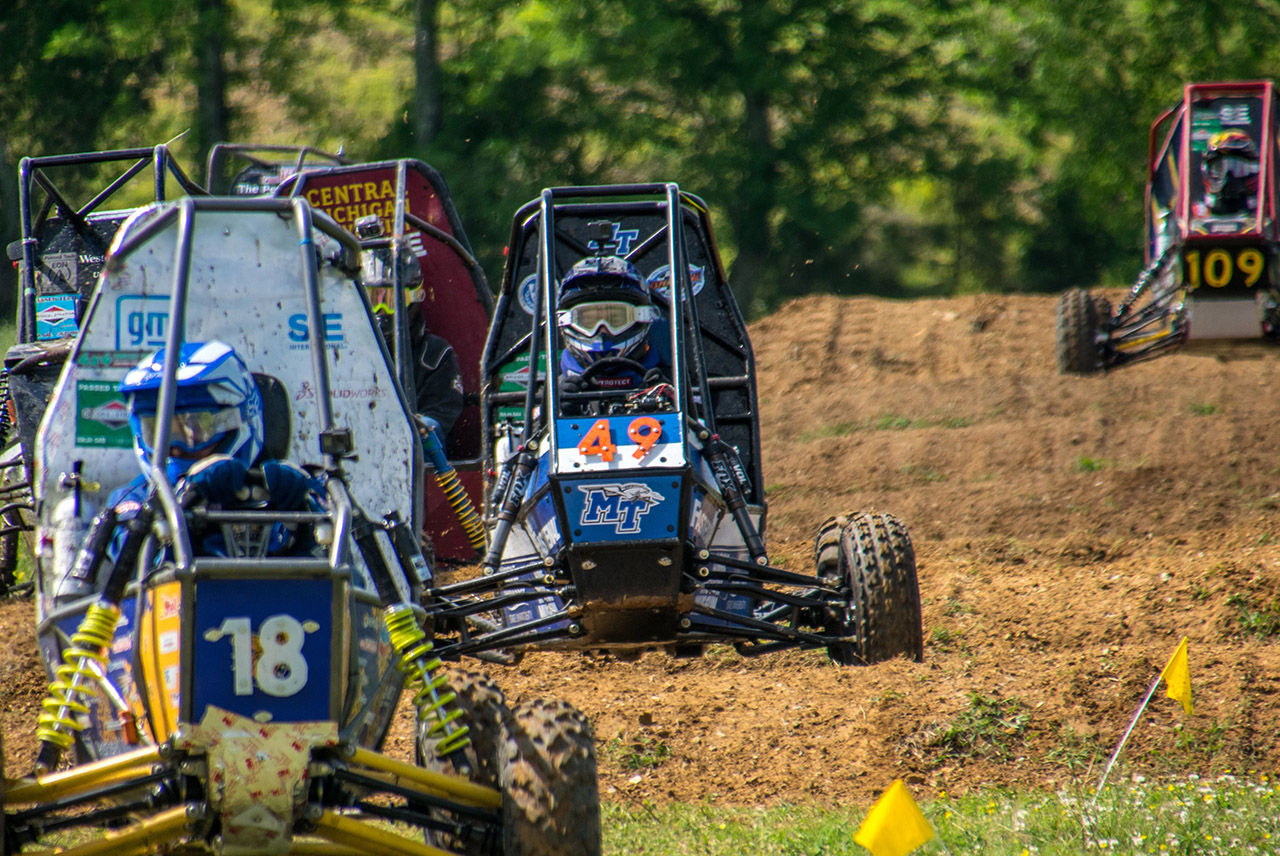Representation Matters: N.C. A&T and SAE talk Collegiate Design Series, HBCUs and Pathways to Success
Posted: February 28, 2023
Hands-on opportunities are a huge advantage for college students looking to get a leg up in the job market.
Students involved in SAE’s Collegiate Design Series get competition-based, real-world experience to solve complex engineering problems, giving a valuable insight into the mobility industry and creating pathways to a career where they can put their degrees to work.
“[A] curriculum doesn’t necessarily prepare you as well to do real life application projects when it’s very textbook or they really push the McGraw-Hill curriculum path,” said Brandon Cason, a junior at North Carolina A&T State University (N.C. A&T) and member of the SAE Baja team at N.C. A&T. “I love the fact that SAE is associated with our school; it’s good for the students because the students need to be prepped to learn hot to do real world work, and that’s what this program allows us to do. Kids who might have a background interest in the automotive industry will be able to use our lab and get that hands on experience…and they’ll be able to do that work that you will be doing for a company.”
The N.C. A&T engineering program is robust and brings a diverse set of students to SAE’s programs through their involvement in multiple SAE Collegiate Design Series programs, including Baja SAE (the flagship program for the university), SAE Aero Design, and AutoDrive Challenge II. It’s also the only HBCU (Historically Black College or University) represented in the Collegiate Design Series.
“North Carolina A&T is the biggest engineering HBCU, and being the biggest, I think we do land a little bit more diversity than others do,” said Daniel Acree Instructor, Projects Coordinator, Director of Aggie Racing at N.C. A&T. “And as everyone is discovering these days, diversity is key in development.” 
Acree has been advising N.C. A&T’s Baja team for over a decade, and prior to serving as an adviser, was a member of the team himself. He’s seen Aggie Racing go through highs and lows, experiencing the thrill of high placements in competitions and the challenges like the one he’s facing now to rebuild the program after years away from in-person instruction caused by COVID.
Through it all, he’s witnessed the incredible power of giving students an opportunity to work with the technology they study, and how a diverse team in all senses of the word—from personal demographic background to academic interest area and beyond—can really allow them to grow and thrive.
“One of my favorite things of being at an HBCU is that all our students—the African American, Caucasian, Hispanic, Asian, Middle Eastern students, both men and women—they’re all drawn to this, and I end up having one of my most diverse groups,” Acree said. “Having people come from different backgrounds means they have different competencies. We have different people with different skill sets, and there’s more learning happening between them than there is coming from me. The more different backgrounds and competencies I can mis together, the more they’re going to bounce off of each other and learn together.”
Cason agrees the teamwork is a vital part of the experience. It’s given him the opportunity to prepare for a future work environment.
“With the current position I hold on the team, not just the teamwork, but the project management, it’s honestly an entire job, in a way,” he said. “There’s so many different things you can learn, and that’s what really amazes me. And it has been really interesting for me hearing everybody’s backgrounds…it’s honestly empowering and it makes you more motivated because you realize that this project means different things to different people.”
Some students have already seen the benefits of bringing their SAE experience outside of N.C. A&T. Junior Baja Team Mitchell Wilson has worked multiple internships and co-ops, with roles at Stellantis and GE Aviation, and taking lessons from each experience to the next.
“The important thing you learn is you’re not the only person working on this. If you’re an engineer working on a design, someone’s going to have to build that design, and someone after that will make adjustments after it’s built,” Wilson said. “So, you always are keeping those people in the back of your head.”
It’s an experience that these students feel grateful to have, and would encourage others to pursue, especially as it provides a pathway into job opportunities in the engineering field, and one that becomes particularly meaningful for underrepresented populations in STEM.
“In terms of what I’ve seen, at my last co-op, I was the only African American person in my pod, but I did see that the company had a lot of DEI (diversity, equity and inclusion) initiatives and trainings, so that was good,” Wilson said. “Creating pipelines is always a good way to start. So, although I was the only African American in my pod, I wasn’t the only black person at the company by any means, and I had the opportunity to meet other black people throughout the company and see myself in them.”
That pipeline that allows students to connect with diverse engineers who work in the field can start with SAE. At each Collegiate Design Series competition, major OEMs including GM, Ford, Toyota, Nissan, and Tesla, among others, are present, recruiting the next generation of talent. And they’re looking for diverse teams who bring varying perspectives to the table.
It becomes even more valuable for everyone, then, for institutions like N.C. A&T to be involved in SAE events, helping students make these vital connections not only to the practical application of course material, but to the companies where they could find themselves employed following graduation. Acree has seen students go on to enjoy success at a number of companies and is still in touch with students who have careers at Cummins, Honda R&D, Volvo Trucks, Ford, GM, Stellantis, John Deere, and in government work.
Seeing the benefits for his own students, Acree encourages other HBCUs to get involved in these programs, but understands the limitations they may be facing, identifying administrative hurdles and cost concerns as potential barriers. He also knows that there are faculty out there just as passionate as he is for providing opportunities for students, and challenges those individuals to advocate to administrators for these programs.
“How do you encourage them? You can use us as an example, and the key is having a passionate faculty member take the reins,” Acree said. “And it’s important to give faculty members who are passionate enough to take this on credit for doing it.”
And perhaps the most important party in this conversation? The students.
Cason and Wilson both advocate for engaging in students’ interests, meeting them where they are at, and giving them the opportunity to shine.
“I believe there are a ton of hungry minority students out there who want to get out there and work, we just need the opportunity,” Cason said. “You know, I’ve always been the type of person where once I’m in the room or I have the spotlight, I’ll do what I have to do. There’s no need for handouts, and no one is asking for them. Just give us the room. Give us the opportunity, and we’ll do what we have to do.”

